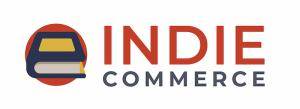Google Analytics for Independent Bookstores
As online sales have become a more significant source of revenue for independent bookstores, understanding what is actually happening on your website has become more important than ever. You may already be familiar with the basics of running an ecommerce website, but leveraging advanced tools like Google Analytics 4 (GA4) can be a game-changer providing deep insights into your website's performance, helping you make informed decisions to boost sales and traffic or even figure out what's happening when something is going wrong.
What is GA4?
Google Analytics 4 is the latest version of Google's analytics. It was designed to provide a more comprehensive view of user interactions across websites. Unlike its predecessor, Universal Analytics, GA4 focuses on event-based tracking. They claim it offers a “more flexible and granular approach to monitoring user behavior” but I’ve used the previous version for years and have found GA4 to be much less intuitive. If you have not used GA4 previously, I would suggest watching a few YouTube videos before plunging in.
Key Performance Indicators (KPIs) to Monitor
To make the most of GA4, focus on the following KPIs that are particularly relevant for ecommerce:
- Conversion Rate: The percentage of visitors who complete a desired action, such as making a purchase. Monitoring your conversion rate helps you understand the effectiveness of your website in turning visitors into customers.
- Average Order Value (AOV): The average amount spent per order. Increasing your AOV can significantly boost your revenue without needing to increase traffic.
- Customer Lifetime Value (CLV): The total worth of a customer over the entire relationship. High CLV indicates strong customer loyalty and effective retention strategies.
- Bounce Rate: The percentage of visitors who leave your site after viewing only one page. A high bounce rate may indicate issues with your landing pages or site content.
For three of the above KPIs (see table below) , how does your bookstore’s website compare to all of the stores on the IndieCommerce Platform in 2023?
For comparison the ecommerce conversion rate for pre-COVID 2019 was 1.56% and during the peak of the COVID lockdown in 2020 it rose to an astounding 5.7%. So the 1.88% we saw last year is significantly higher than the Pre-COVID years. Unless we trap everyone in their homes again I don’t see the conversion rate achieving the highs that we saw during the pandemic anytime soon.
If Your Website is not already Using Google Analytics, here is how to get started
To start using GA4, follow these steps:
- Set Up GA4 Property: In your Google Analytics account, create a GA4 property and connect it to your website.
- Add the GA4 tracking code to your website.
- Configure Events and Conversions: Define key events and conversions that you want to track, such as product views, add-to-cart actions, and completed purchases.
- Explore GA4 Reports: Familiarize yourself with GA4’s reports and dashboards. Customize them to focus on the KPIs that matter most to your business.
Google Analytics 4 offers powerful tools for independent bookstores to gain deeper insights into their ecommerce performance. By leveraging GA4, you can monitor critical KPIs, understand customer behavior, and optimize your website to increase online sales and traffic. If your online sales or traffic drop off, GA4 can give you insights into understanding why. If your bookstore has a website, you should be using Google Analytics.
